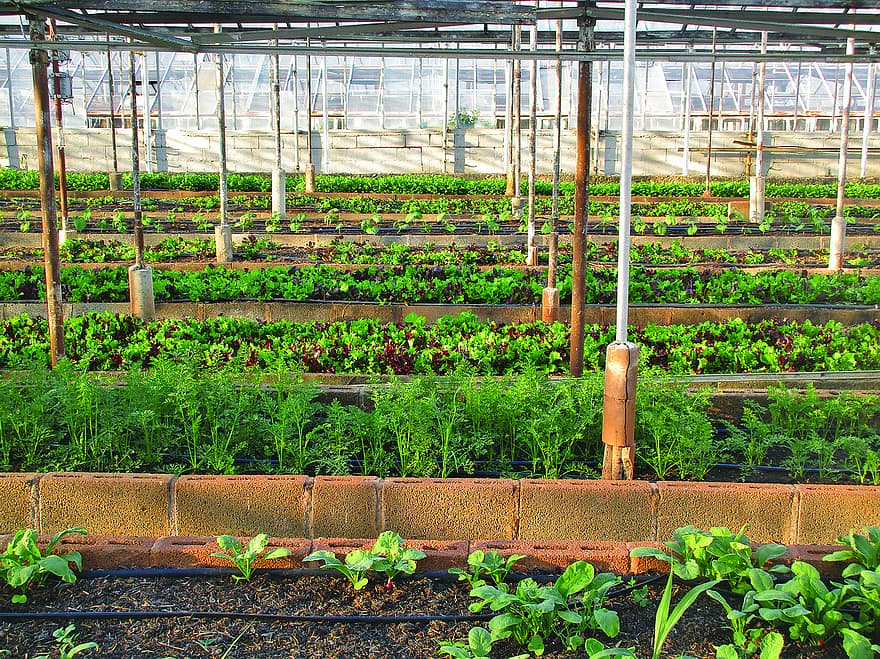A year-round productive vegetable garden from February is possible if you know when to start growing vegetables in a greenhouse. Perhaps the most significant advantage in greenhouse farming is that you can start growing from the beginning of the year until the last month. If you’re using a heated greenhouse, it’s even possible to grow vegetables amidst all seasons.
More than knowing when to start growing vegetables in a greenhouse, you must consider the seasons and classify plants into hardy, cold-season, and warm-season crops. Learning about the planting zones in your state will also work to your advantage because it lets you know what plants will survive. To give you a general idea, those rated zone 1a have extreme annual temperatures of -60 to -55°F, while zone 13b is 65 to 70°F.

How To Know When To Start Growing Vegetables In A Greenhouse
You can start growing vegetables in a greenhouse as early as February in locations like Colorado because it is suitable for cool-season and warm-season plants. This is why you will know when to start growing vegetables in your area if you know your planting zone and expected conditions. And since you’ll be using a greenhouse, you can adjust the indoor conditions accordingly.
Classify vegetables
Hardy vegetables
Winter gardening is risky even in a greenhouse, but you can still start hardy, frost-tolerant crops in December or January. Some gardeners in Oregon also mentioned some vegetables could withstand a heavy frost. Common hardy plants for cold temperatures are beets, spinach, leeks, kale, turnips, carrots, radishes, Brussels sprouts, and Swiss chard.
You can harden frost-tolerant crops by gradually introducing them to outdoor conditions and then begin to transplant in February or March. Bulb onions are even hardy enough for January transplanting. There are also semi-hardy vegetables that are ideal for cool-season planting in the greenhouse.
Cool-season vegetables
You can grow broccoli, cauliflower, cabbage, and lettuce at the beginning of March in the greenhouse. Parsley and celery can also withstand light frost. These vegetables are best hardened off and transplanted in April.
If you’re in a temperate region, it’s also possible to start a second crop of cool-season vegetables in July and August before transplanting them later in the month and September. This will prepare them for the cooler temperatures in autumn. They will also be ready for harvest at this time through the next early spring.
Warm-season vegetables
The warm-season vegetables like tomatoes, squash, eggplant, legumes, peas, cucumbers, peppers, and corn can get busy in the greenhouse in March and April. However, remember that some areas can experience frost even into spring, so the middle of April or the beginning of May is more ideal for these crops. Because warm-season vegetables can’t tolerate cold temperatures, it’s best always to check the conditions in the greenhouse beforehand.
Know your seasons
Late winter to mid-spring
You can start growing hardy plants in the greenhouse from late winter to early spring. If you have a heated propagator, you can sow some other plants early as well. Additionally, you can sow fast-growing tender vegetables in mid-spring.
Late spring to late-summer
Late spring to early summer is the best time to plant summer vegetables, and then you can harden them after the frost. By mid-summer, you can harvest summer crops and remove spent vegetables like cucumber. By late summer, you can sow vegetables like lettuce, baby carrots, and salad leaves in the greenhouse for a new harvest.
Autumn
By autumn, you can plant some vegetables like parsley and calabrese indoors. Some crops like peas are also best for overwintering. In Maine, you can plant leafy greens in fall, and cruciferous vegetables are even suitable for early August planting.
Is Year-Round Greenhouse Planting Possible?
Year-round greenhouse planting is possible because you can control the conditions indoors for your vegetables. In states like Colorado, you can even seed cold-tolerant crops in February without supplemental lighting. Greenhouses also work best to start most plants until you can transplant them outside.
You can then seed warm-season crops and harvest cold-tolerant crops around March or April. May can also be the month of harvest for leafy greens and for transplanting the vegetables you started indoors. Still, it’s best to have a cooling system to prevent overheating on your warm-season crops for June to July.
August to September is for winter gardening, while November to January might require supplemental lighting as the day length shortens. Overall, you want your plants to mature by November or December so that you can still harvest slowly through winter. And depending on your area, the greenhouse can protect your vegetables against frost in the winter.
Conclusion
The most significant advantage of greenhouse gardening is that it makes it possible to be productive year-round. But do you know when to start growing vegetables in a greenhouse? In states like Colorado, it’s possible to sow or plant as early as February.
Upon knowing your planting zone, seasons, and crop classifications, you can plant in the greenhouse regardless of the conditions. You can use the greenhouse to protect against frost or start some vegetables indoors until the outdoor climate is suitable.
